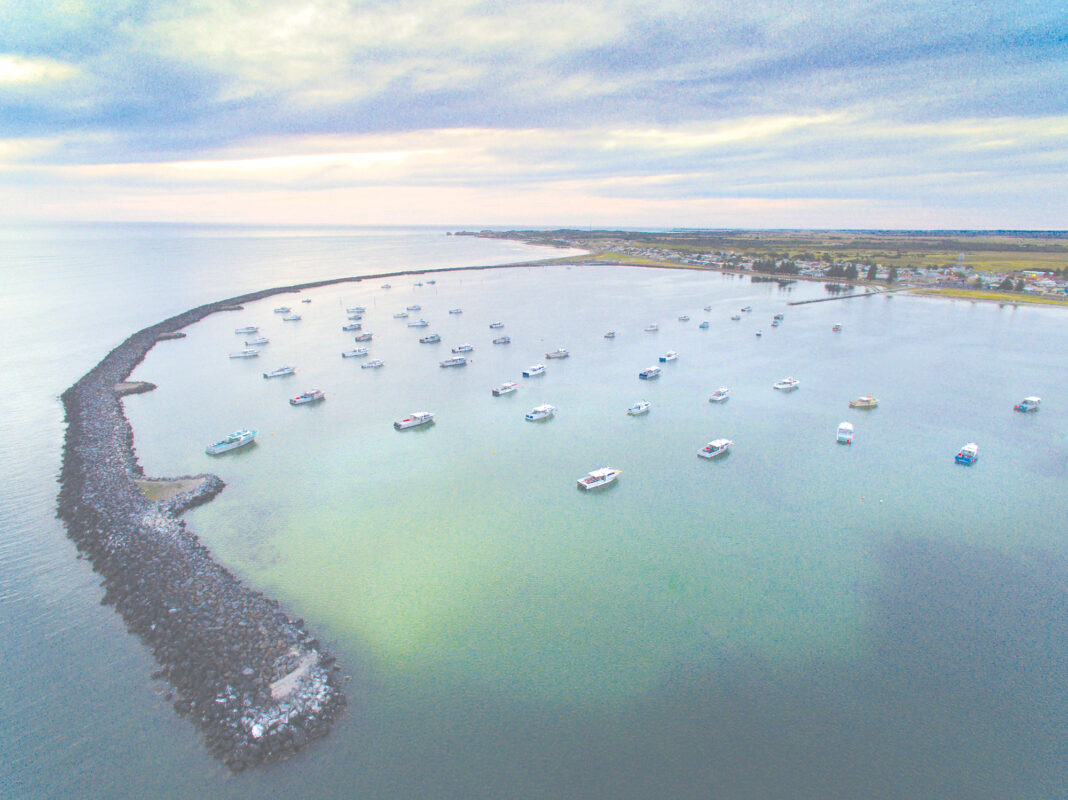It’s been nearly eight months since second-generation fisherman Shannon Smith was forced to pull up his cray pots for rock lobster fishing, due to a crash in the export market caused by the coronavirus.
Mr Smith, who rises at 3am during his working week said he was happy to be back out on the boats for another season, plying the family trade, despite being forced to operate in lingering conditions of uncertainty in one of the world’s most challenging lines of work.
“I grew up in a fishing family, so it’s just something that I’ve always wanted to do,” he told The SE Voice. “My dad, who was a fisherman, was my hero and I just wanted to pursue the same career path that he had.”
Alongside his wife and sole employee, his son, Mr Smith is the owner and operator of Port MacDonnell-based fishing vessel Saltaire, a family-owned boat with an 80-pot license that supports three families, including his parents.
While the start of a new season two weeks ahead of schedule is welcome news, beginning officially on 15 September, Mr Smith told The SE Voice he remains uncertain about the success of the 2020 season.
“You have to be positive and hope that everything turns out, but there’s also a lot of uncertainty,” he said.
Despite the southern zone season opening earlier than usual to recoup losses caused by the COVID-19 pandemic and potential market disruptions, off the back of a lull that allowed fishermen across SA to fish for uncaught quota, prices for crayfish continue to fluctuate.
Local exporters were reporting early prices around $80 per kilogram. However, Mr Smith said this week that prices for his own catch were sitting at around $60 per kilogram.
Demand for lobster crashed earlier in the year when the industry’s main export market, China, cancelled its Lunar New Year celebrations due to the dangers of the coronavirus.
The South Australian government later met with Australia’s beleaguered crayfish industry to establish support measures, which included bringing forward the start date for the current season and rolling over any uncaught fishing quota into the available catch.
Mr Smith said he briefly returned to the waters off Port MacDonnell to fish for his uncaught quota in April, alongside many other fishermen, but has now returned to full operations.
Additionally, the state government has facilitated weekly flights for export produce through the Commonwealth’s International Freight Assistance Mechanism.
Sky Seafoods owner Andrew Lawrie, from Robe, is optimistic about the opening of the season, but believes one of this season’s challenges will be the availability of air freight out of Australia.
“The catch has been quite excellent,” Mr Lawrie said.
“We haven’t fished in September for many decades so I’m not sure whether it’s because of that and we are getting the end of the winter crawl with the bigger lobster, or whether it’s just a good season.”
Mr Lawrie said he was pleased with the season’s opening prices.
“It’s a new season,” he said. “We have already been hit by the coronavirus (at the start of 2020), we can’t dwell on that, we have to get on it with it, and as far as a new season it’s been quite good, especially the catch rate.”
With so few planes leaving Australia, exporters have been forced to rely on freighter services, which Mr Lawrie said were not as reliable or run as often as regular passenger services. Normally, exporters would be able to “piggy-back” on domestic flights, using the cargo bays of passenger aircraft to transport product to overseas markets.
“It’s always going to be better with passenger flights,” he said. “Probably this whole season we won’t have that option – it will all be freighters, which can be hit and miss.
“At the moment there are not too many issues, but the issue is going to be when everyone is looking for freight.”
Despite the hardship of the craft, and the pressures, uncertainties and whims of the market, Mr Lawrie told The SE Voice: “We are excited. It’s a new season, and nothing has bitten us yet.”
Mr Smith agreed that the availability of flights out of the country would continue to be one of the industry’s biggest challenges.
“Everyone wants to come back into Australia – no one wants to fly out of Australia,” he said.
But alongside this is the potential of fluctuations in the international market to disrupt the consistency of fishermen.
“If there’s good demand for our product, obviously, that drives the value,” Mr Smith said.
“And that makes our operations easier because we can just continue to fish, day, after day, after day.
“This makes it easier from a fisherman’s point-of-view, because you know where you’ve been fishing, you know where you’re going to fish, and you know where other fishermen are fishing and have been fishing, and you can really keep your finger on the pulse.
“Productivity is just better when you’re fishing every day. When you stop and start a lot, you tend to lose that rhythm.”
According to the South Eastern Professional Fishermen’s Association (SEPFA), the southern zone fishery generates up to $120 million in gross value of production annually and around 1,300 full time equivalent jobs for SA.
Many of these jobs directly support the towns and coastal communities of the Limestone Coast, with approximately 155 active vessels within the southern zone rock lobster fishery.
SEPFA executive officer Nathan Kimber told The SE Voice that “there’s certainly demand for rock lobster” in Australia’s largest export market, China, but admitted this year’s opening price point is probably not as high as previous seasons.
Mr Kimber said the prices for season opening generally sat between $65 per kilogram through to around $90 per kilogram, depending on the size and colour of lobsters.
“From a biological stock perspective, we’re expecting the season to be quite strong,” Mr Kimber said.
“We’ve had improved catch-rates in the fishery for the last three to four seasons, and we’re expecting to be able to maintain those catch-rates throughout this season.
“There’s obviously going to be some challenges with the market and in freight space in particular. Getting the product where it needs to go is something that the processing sector has done quite a bit of work on over the last couple of months, and we’ve made some pretty steady in-roads.
“But our biggest concern for the season coming up is essentially air freight space to get the product to China.”



